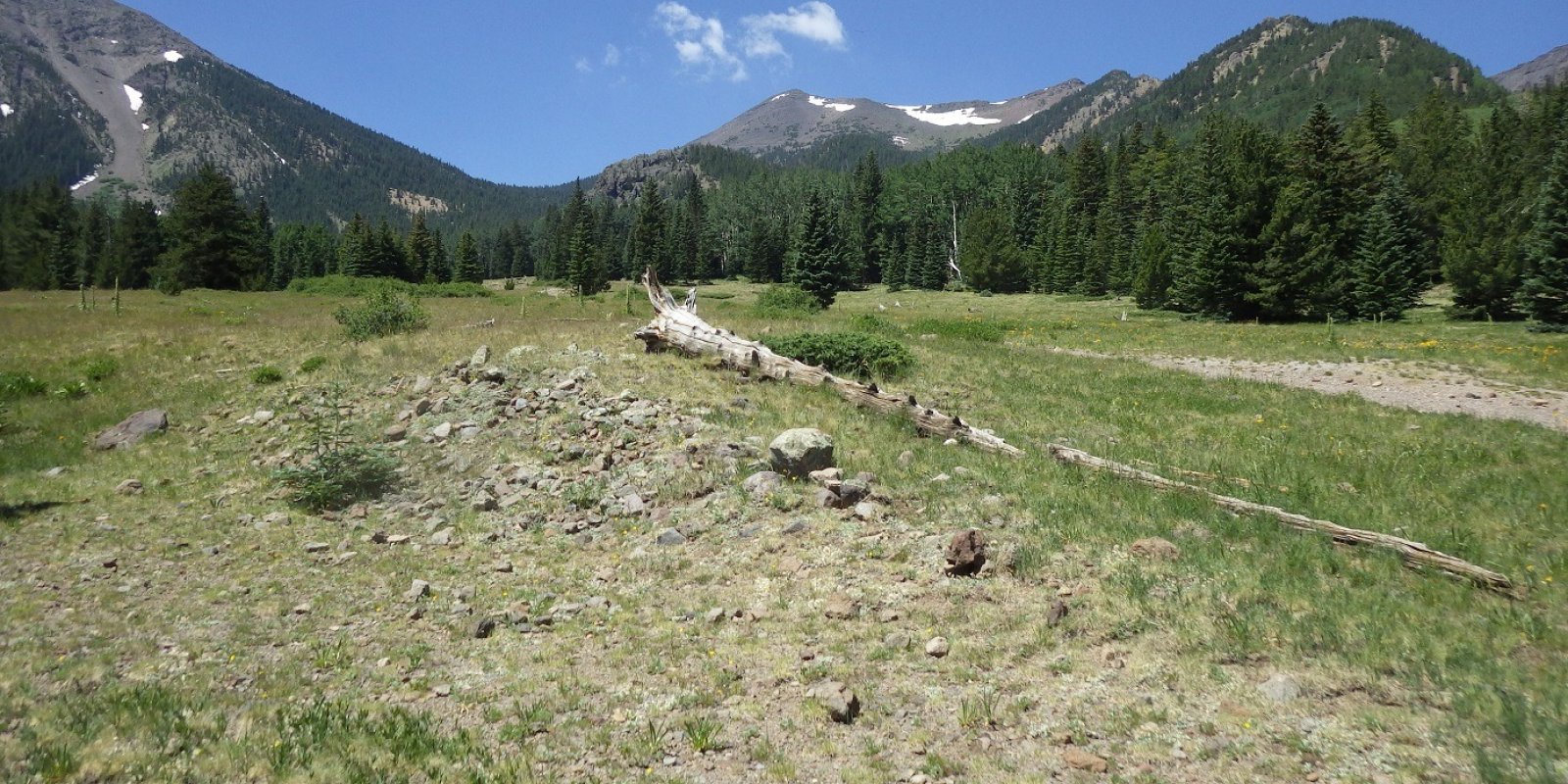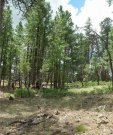
Major Land Resource Area 039X
Mogollon Transition North
Accessed: 12/21/2025
Next steps
-
1
Select an ecological site
Select an ecological site using the list, keys, photos, briefcase, or quick search option located on this page. -
2
Explore the ecological site description
Next, learn more about the selected ecological site and its characteristic dynamics by browsing the ecological site description and exploring alternative state and transition model formats.
Ecological site list
-
ProvisionalF039XA001NM/F039XA001NMPseudotsuga menziesii-Populus tremuloides/Quercus gambelii-Robinia neomexicana
-
ProvisionalF039XA002NM/F039XA002NMPinus ponderosa-Pseudotsuga menziesii/Quercus gambelii-Cercocarpus montanus
-
ProvisionalF039XA003NM/F039XA003NMPinus edulis-Juniperus scopulorum/Quercus gambelii/Bouteloua gracilis
-
ProvisionalF039XA004NM/F039XA004NMPinus ponderosa-Juniperus deppeana/Quercus gambelii/Festuca arizonica
-
-
-
-
i
Key Characteristics
- 17” to 22” p.z.
- Forestland
- Slopes generally less than or equal to 15%
- Soils Moderately Deep or Deeper
- Soil surface loam. Subsurface clay loam, clay and/or sandy clay loam. Soil non-effervescent throughout the profile
-
-
i
Key Characteristics
- 17” to 22” p.z.
- Forestland
- Slopes generally less than or equal to 15%
- Soils Moderately Deep or Deeper
- Soil surface loam, generally gravelly or very gravelly. Subsurface loam, clay loam, and/or clay, often gravelly. Soil surface littered with cinders
-
i
Key Characteristics
- 17” to 22” p.z.
- Forestland
- Slopes generally less than or equal to 15%
- Soils Shallow or Very Shallow
- Soil surface stony loam to very cobbly loam. Subsurface cobbly clay loam to very cobbly clay. Soil is shallow to basalt bedrock
-
i
Key Characteristics
- 17” to 22” p.z.
- Forestland
- Slopes generally less than or equal to 15%
- Soils Shallow or Very Shallow
- Soil surface very flaggy loam. Subsurface very flaggy loam. Soil is shallow to limestone bedrock and is slightly effervescent throughout
-
i
Key Characteristics
- 17” to 22” p.z.
- Forestland
- Slopes generally greater than 15%. Soils Shallow or Very Shallow. Soil surface very stony loam. Subsurface clay loam and/or clay, generally cobbly. Soil is non-effervescent and shallow to basalt bedrock
-
-
-
-
-
-
-
-
-
-
-
-
-
-
-
-
i
Key Characteristics
- 17” to 22” p.z.
- Rangeland
- Uplands (does not receive additional run-in moisture)
- Slopes generally equal to or less than 15 percent
- Soils moderately deep and deep
- Soil surface silt loam to gravelly clay loam, two to three inches thick. Subsurface stony clay to clay
-
i
Key Characteristics
- 17” to 22” p.z.
- Rangeland
- Uplands (does not receive additional run-in moisture)
- Slopes generally equal to or less than 15 percent
- Soils moderately deep and deep
- Soil surface gravelly loam, cobbly loam, or gravelly silt loam, 4 to 10 inches thick. Subsurface gravelly clay loam to cobbly clay loam
-
i
Key Characteristics
- 17” to 22” p.z.
- Rangeland
- Uplands (does not receive additional run-in moisture)
- Slopes generally equal to or less than 15 percent
- Soils very shallow or shallow. Soil surface fine sandy loam, cobbly sandy loam, cobbly loam, sandy loam, or loam, about five inches thick. Subsurface loam, sandy clay loam, and/or clay loam with greater than 50 percent rock fragments. Soil is shallow to hard tuff
-
i
Key Characteristics
- 17” to 22” p.z.
- Rangeland
- Uplands (does not receive additional run-in moisture)
- Slopes generally equal to or less than 15 percent
- Soils moderately deep and deep
- Soil surface stony clay loam, cobbly silt loam, or cobbly clay loam, 2 to 5 inches thick
-
i
Key Characteristics
- 17” to 22” p.z.
- Rangeland
- Occurs in a bottom position (receives run-in moisture from surrounding ecological sites) and/or is Subirrigated
- Flooded at least rarely
- Soil surface sandy loam to clay loam, 2 to 15 inches thick. Subsurface fine sandy loam to clay
-
i
Key Characteristics
- 17” to 22” p.z.
- Rangeland
- Occurs in a bottom position (receives run-in moisture from surrounding ecological sites) and/or is Subirrigated
- Flooded at least rarely
- Soil surface clay, about 3 inches thick. Subsurface clay, silty clay and/or silt loam
-
i
Key Characteristics
- 17” to 22” p.z.
- Rangeland
- Occurs in a bottom position (receives run-in moisture from surrounding ecological sites) and/or is Subirrigated
- Flooded at least rarely
- Soil surface loam, about 3 inches thick. Subsurface clay loam, clay, and/or sandy clay, generally gravelly or very gravelly
-
i
Key Characteristics
- 17” to 22” p.z.
- Rangeland
- Occurs in a bottom position (receives run-in moisture from surrounding ecological sites) and/or is Subirrigated
- Soil Subirrigated
- Soil surface loam. Subsurface loam and/or clay loam, generally very stony or extremely stony. A water table is found at 0 to 5 inches from the soil surface
-
i
Key Characteristics
- 17” to 22” p.z.
- Rangeland
- Occurs in a bottom position (receives run-in moisture from surrounding ecological sites) and/or is Subirrigated
- Soil Subirrigated
- Soil surface cobbly loam. Subsurface clay loam, generally very cobbly or extremely cobbly
-
i
Key Characteristics
- 17” to 22” p.z.
- Rangeland
- Uplands (does not receive additional run-in moisture)
- Slopes generally equal to or less than 15 percent
- Soils moderately deep and deep
- Soil surface is loam, generally gravelly, cobbly, or very stony. Subsurface is clay loam, clay and/or loam, generally gravelly, very gravelly, and/or cobbly
-
-
-
-
-
-
-
-
-
Ecological site map
Basemap
Find me
Find point
Full screen
Zoom in to display soil survey map units for an area of interest, and zoom out to display MLRAs. Select a map unit polygon to view ecological sites correlated to that map unit. View a brief description of an ecological site by clicking on its name in the map popup. Soil survey correlations may not be accurate, and ecological site classification of a location should always be verified in the field. Each selection may require the transfer of several hundred KB of data.
Ecological site keys
Ecological site photos
Print Options
Sections
Font
Other
Briefcase
Add ecological sites and Major Land Resource Areas to your briefcase by clicking on the briefcase (![]() ) icon wherever it occurs. Drag and drop items to reorder. Cookies are used to store briefcase items between browsing sessions. Because of this, the number of items that can be added to your briefcase is limited, and briefcase items added on one device and browser cannot be accessed from another device or browser. Users who do not wish to place cookies on their devices should not use the briefcase tool. Briefcase cookies serve no other purpose than described here and are deleted whenever browsing history is cleared.
) icon wherever it occurs. Drag and drop items to reorder. Cookies are used to store briefcase items between browsing sessions. Because of this, the number of items that can be added to your briefcase is limited, and briefcase items added on one device and browser cannot be accessed from another device or browser. Users who do not wish to place cookies on their devices should not use the briefcase tool. Briefcase cookies serve no other purpose than described here and are deleted whenever browsing history is cleared.
Ecological sites
Major Land Resource Areas
The Ecosystem Dynamics Interpretive Tool is an information system framework developed by the USDA-ARS Jornada Experimental Range, USDA Natural Resources Conservation Service, and New Mexico State University.




